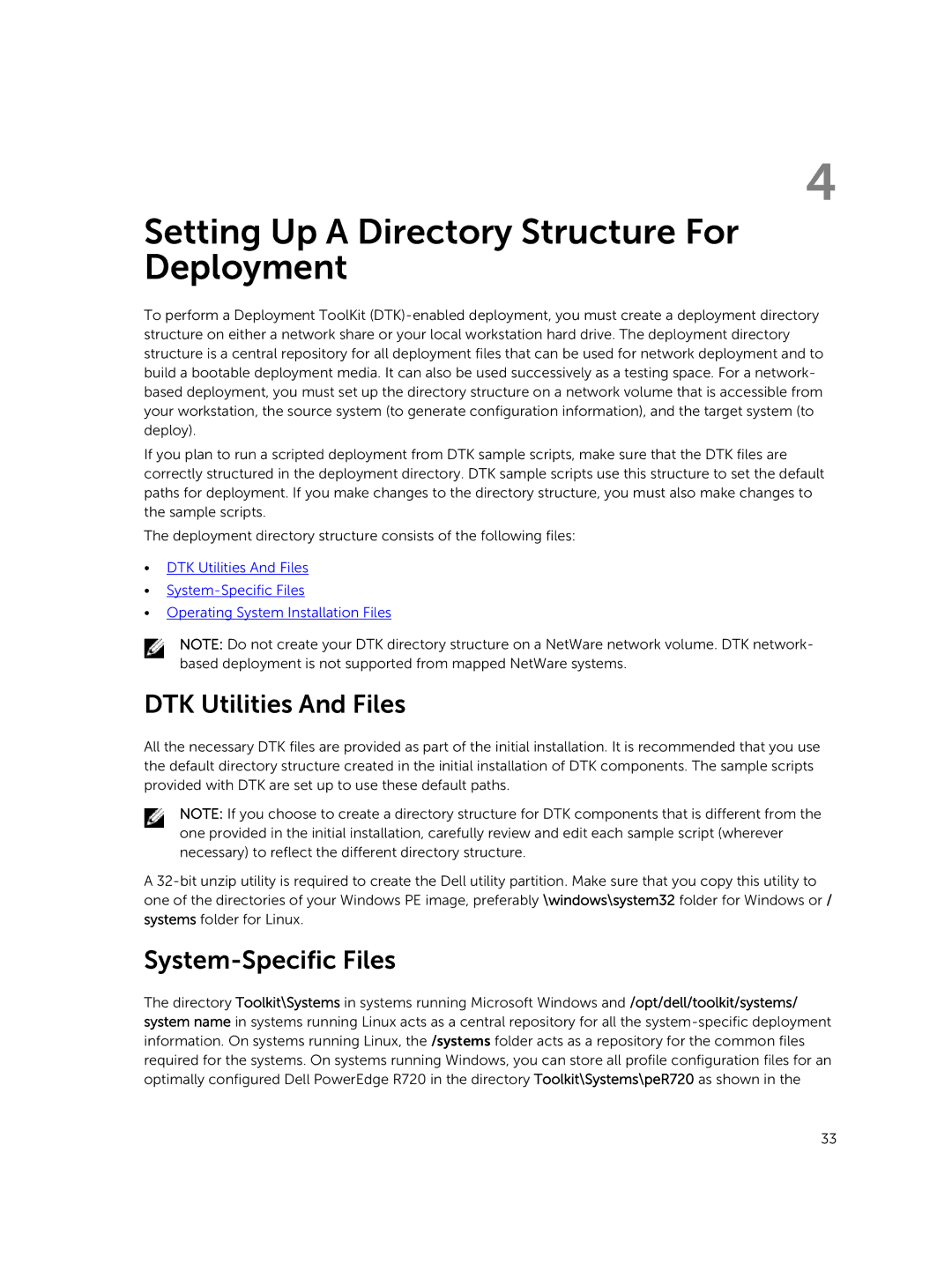4
Setting Up A Directory Structure For Deployment
To perform a Deployment ToolKit
If you plan to run a scripted deployment from DTK sample scripts, make sure that the DTK files are correctly structured in the deployment directory. DTK sample scripts use this structure to set the default paths for deployment. If you make changes to the directory structure, you must also make changes to the sample scripts.
The deployment directory structure consists of the following files:
•DTK Utilities And Files
•
•Operating System Installation Files
NOTE: Do not create your DTK directory structure on a NetWare network volume. DTK network- based deployment is not supported from mapped NetWare systems.
DTK Utilities And Files
All the necessary DTK files are provided as part of the initial installation. It is recommended that you use the default directory structure created in the initial installation of DTK components. The sample scripts provided with DTK are set up to use these default paths.
NOTE: If you choose to create a directory structure for DTK components that is different from the one provided in the initial installation, carefully review and edit each sample script (wherever necessary) to reflect the different directory structure.
A
System-Specific Files
The directory Toolkit\Systems in systems running Microsoft Windows and /opt/dell/toolkit/systems/ system name in systems running Linux acts as a central repository for all the
33
